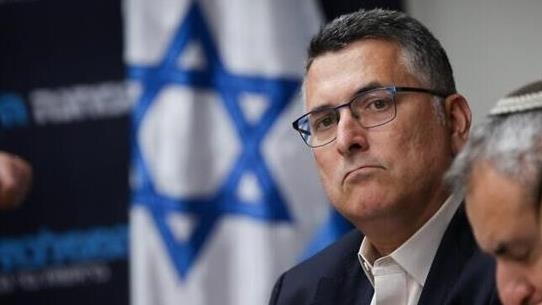Israeli Officials: We Are on the Verge of an Agreement to Release Hostages as Part of the 'Trump Plan'

High-ranking Israeli officials confirmed on Sunday that negotiations are progressing towards an agreement that ensures the release of hostages held by Hamas in the Gaza Strip, as part of the first phase of the American peace plan unveiled by President Donald Trump last week.
In this regard, Israeli Foreign Minister Gideon Sa'ar stated that the essence of the first phase of the plan is to "release the Israeli hostages." He expressed hope that Israel is now "closer than ever to an agreement regarding the hostages since the January agreement."
Sa'ar thanked President Trump for his "tremendous efforts to bring all our hostages home," emphasizing that the Israeli government is "doing everything possible to achieve this, and we look forward to seeing them return very soon." He clarified Israel's commitment to returning "all hostages, whether alive or dead," noting that his country "is working and will work to implement the first phase of the Trump plan swiftly."
The detailed map attached to the plan revealed that strategic areas, namely Rafah, Beit Hanoun, and the Philadelphia Corridor, will remain under full Israeli control during this phase.
According to the map, the initial path for the Israeli withdrawal _indicated by a yellow line_ will extend along the Gaza Strip from north to south. The withdrawal begins from Beit Hanoun in the far north, passing through Beit Lahiya, Gaza City, Al-Bureij, Deir al-Balah, Khan Younis, and Khuza'a, reaching the outskirts of Rafah in the south. This gradual withdrawal is expected to occur simultaneously with the release of hostages and remains.
For his part, Israeli Defense Minister Yoav Gallant expressed optimism about the possibility of "informing the families of the hostages about the return of all captives to their homes, alive and dead," as part of Trump's initiative.
Gallant pointed to the ultimate strategic goal of the plan, stating: "By the end of the Trump plan, Hamas will be disarmed, and the Gaza Strip will be stripped of weapons, while the Israeli army will remain in specific areas to protect the settlements and will act against any potential threat."
Diplomatically, a preliminary meeting was held on Sunday, bringing together Israeli hostage affairs envoy Gal Hirsch and Julian Lerison, head of the International Committee of the Red Cross mission in Israel and the Palestinian territories.
Hirsch posted on the "X" platform that "the Red Cross has previously played a pivotal role in hostage delivery operations during previous ceasefires," referring to the expected role of the organization in any upcoming release process.
At the same time, indirect talks are taking place in the Egyptian capital, Cairo, between Israel and Hamas, focusing on the issue of delivering the remaining 48 hostages, of which only about 20 are believed to be alive. The expected agreement includes an immediate ceasefire in exchange for Israel's release of hundreds of Palestinian prisoners.
It is worth noting that the Trump plan, which does not specify a precise timeline, states that Israeli forces "will withdraw to an agreed line to facilitate the release of the prisoners," with "all military operations suspended until the conditions for complete and gradual withdrawal are met."
Israeli Prime Minister Benjamin Netanyahu had confirmed before the announcement of the plan that the army "will reposition, but will continue to control strategically important areas within Gaza." He also reiterated on Saturday in a televised speech that "the Israeli army will remain deep in the Gaza Strip to protect Israel's security," repeating that the disarmament of Hamas will occur "either diplomatically under the Trump plan or militarily if necessary."